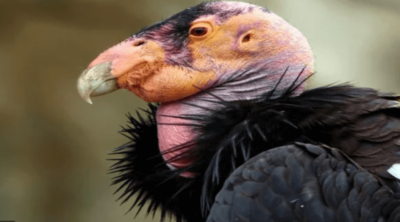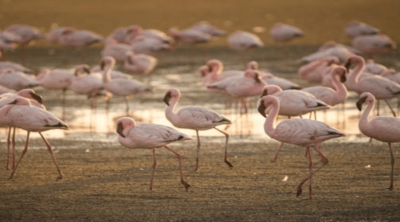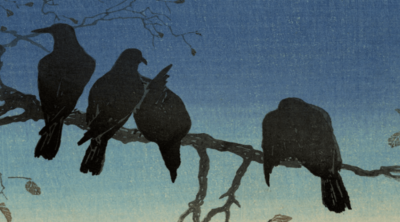
The American goldfinch, A.K.A Eastern goldfinch, is a bird native to North America. This bird is mostly seen in areas of human habitation, and feeds purely on seeds. It is classified into the songbird category, due to its peculiar but distinct style of chirping. Take a look at some enthralling American goldfinch facts, provided by BirdEden in this write-up.
Did You Know?
During the winter, American goldfinches keep themselves warm by either burrowing under the snow or by roosting together in coniferous trees.
Finches are seed-eating birds, and are famous for their ability to sing or chirp melodiously. Goldfinches come in 4 types: Lesser’s goldfinch, Lawrence’s goldfinch, American goldfinch, and European goldfinch; the first three being native to America, and belonging to the Spinus genus. The last one is abundant in Europe, North Africa, and Central Asia, and belongs to the Carduelis genus.
American goldfinches are commonly known as the only finches in their family who have the ability to molt and grow new feathers. The male is characterized by a bright yellow in the summers, and a shade of olive in the winters. Similarly, females are seen in a yellowish brown shade, which turns brighter in summer. This unique color-changing feature is a result of the process of sexual dimorphism in their coloration. The bird is loved by humans, especially bird-feeders; the bird too loves the human race back, by its frequent appearances in residential areas and feeding grounds. Goldfinches are migratory birds; they visit areas from North Carolina to Canada during the breeding season somewhere during late summers; otherwise, they are most commonly seen in New Jersey, Iowa, Washington, and Mexico.
Let’s take a look at the bird’s scientific classification, physical characteristics, diet, reproduction, and some other very interesting facts.





Scientific Classification
| Common Name | American goldfinch |
| Binomial Name | Spinus tristis |
| Kingdom | Animalia |
| Phylum | Chordata |
| Class | Aves |
| Order | Passeriformes |
| Family | Fringillidae |
| Genus | Spinus |
Physical Characteristics
- This bird grows up to a maximum of 5 inches in length, with a size similar to a house sparrow. It weighs about 11 – 20 grams. The wingspan measures around 7.5 – 8.7 inches (19 – 22 cm).
- Goldfinches are pure vegetarians, feeding only on sunflower or other seeds.
- These are the only birds in their family to undergo a complete molting process twice a year; once in late winter, and then in late summer.
- The males can be easily recognized by their unique sunflower yellow color and a jet black spot on the forehead resembling a hood. Similarly, females do not have a spot, and have a slight tinge of brown in the yellow.
Habitat
- The goldfinch loves weedy areas, fields, open floodplains, suburbs, and areas of human habitation like parks, backyards, etc. Its ideal habitat would consists of an area with plants like sunflower, aster, cosmos, zinnias, or other thistle plants for food; some shrubs and trees for nesting, and a nearby water source like a lake or a pond.
Nesting
- The construction of the nest is carried out by both the male and the female, in union.
- The nest is neatly woven, using plant fibers, rootlets, and twigs; It is so strong and perfectly woven that it can even hold water without leaking. The binding cement often includes spider silk, and a sticky feathery material fetched from the thistles which these songbirds feed upon. The nests are usually seen in a shrub or a tree, especially in a spot where the branches unite.
- Nest building takes around 6 – 7 days. The finished nest is about 3 inches long, and 3 – 4 inches high. Females lay 2 – 7 eggs per brood. The nesting period is approximately 11 – 18 days, whereas the incubation period is 12 – 14 days.
Other Interesting Facts
- In comparison to the breeding seasons of other birds, the American goldfinch breeds a little late, beginning from the month of July to September.
- As these birds need to balance on the dandelions of thistles, they have the ability to eat hanging upside down as well as in the normal perching position. This unique ability of theirs allows them to access several food sources which other birds can’t.
- The female isn’t very territorial when it comes to her nest. Although a monogamous bird, she may very well leave her nest and join another mate to begin a new brood.
- Goldfinches usually binge on food and gain considerable weight during or prior to a storm.
- The American goldfinch is the state bird of New Jersey, Iowa, and Washington.
- These birds make flight calls similar to the rhythm of ‘po-ta-to-chip’.



